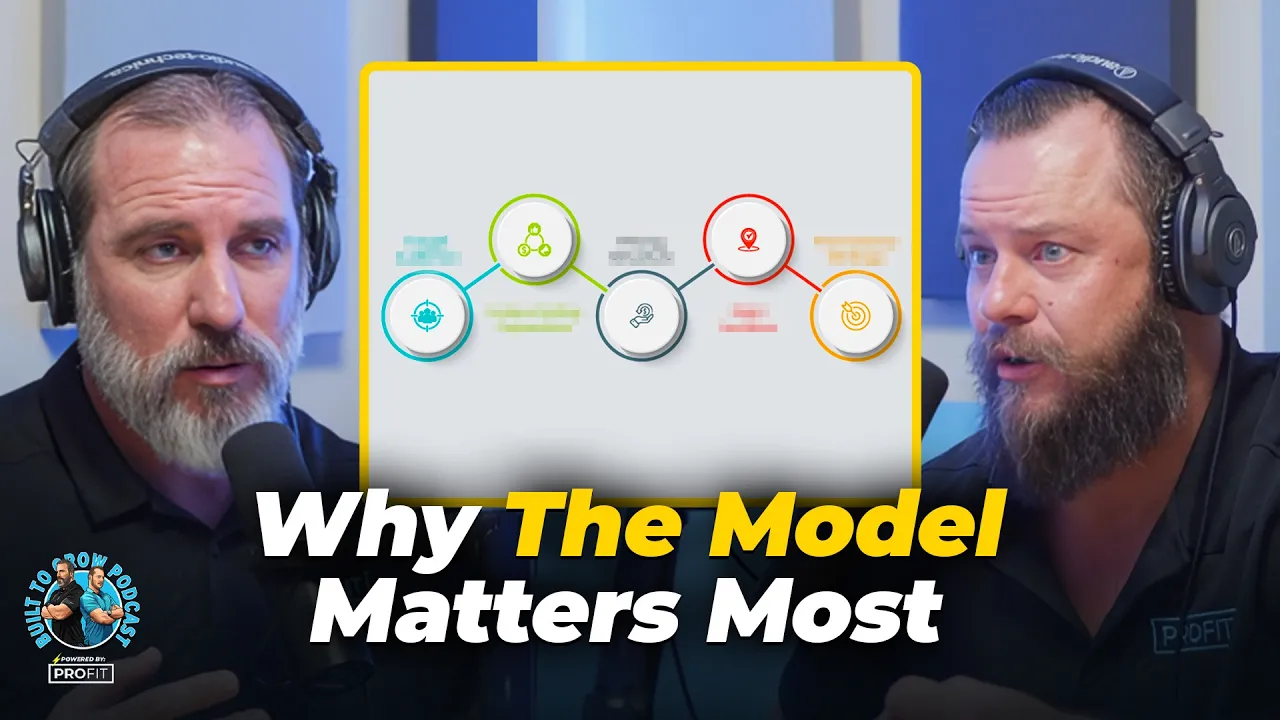
Unlocking Growth with Semi Private Training: The Key to Breaking the $30K Monthly Barrier

Are you struggling to push your gym's revenue past the $30K mark? The secret might lie in adopting a semi private training model. In this blog, we'll explore the advantages of semi private training and how it can transform your business model for sustainable growth.
Intro
Welcome to a transformative journey in the fitness industry! If you're a gym owner hitting a revenue ceiling, it's time to rethink your approach. The semi private training model could be your gateway to sustainable growth and profitability. In this blog, we'll dive into the importance of your gym's business model, the scalability challenges of traditional one-on-one training, and the myriad benefits of adopting a semi private training structure.
The Importance of Your Gym’s Business Model
Your gym's business model is the backbone of your success. Without a solid foundation, every aspect of your operations—from lead generation to staffing—becomes shaky. Many gym owners enter the industry with a passion for fitness but neglect the business side. This oversight often leads to frustration and stagnation.
In the fitness landscape, three primary training models exist: one-on-one private training, large group training, and semi private training. Each has its pros and cons, but your choice of model will heavily influence your growth potential. Understanding the significance of these models is crucial for your gym's long-term success.
The Scalability Challenges of One-on-One Training
One-on-one training may seem appealing due to its high price point, but it presents significant scalability challenges. As a gym owner, you may find yourself working long hours to accommodate a limited number of clients. The model inherently restricts the number of sessions you can conduct, capping your revenue potential.
Consider this: if you have eight clients who want to train at 6 AM, you need eight coaches to service them effectively. This not only strains your resources but also inflates your payroll expenses. In this scenario, gym owners often find themselves trapped, unable to grow beyond a certain revenue threshold.
Moreover, the reliance on personal trainers can lead to inconsistencies in service delivery. If one trainer leaves or becomes unavailable, it disrupts the client experience and can result in lost revenue. The one-on-one model may provide immediate financial gratification, but it lacks the sustainable growth potential needed for long-term success.
The Benefits of Semi Private Training
Semi private training offers a balanced approach that combines the advantages of personalized attention with the efficiency of group dynamics. In this model, clients receive individualized programming while training alongside a small group. This not only fosters a sense of community but also enhances motivation and accountability.
One of the most compelling benefits of semi private training is its scalability. With a structured approach, you can effectively manage multiple clients at once without sacrificing the quality of service. For instance, training six clients in a session allows you to maximize your time and resources, increasing overall revenue without significantly increasing operational costs.
- Enhanced Retention Rates: Clients in semi private training typically enjoy longer retention periods compared to those in large group settings. The individualized focus keeps them engaged and committed to their fitness journey.
- Higher Profit Margins: By offering semi private sessions, gyms can charge premium prices while still providing exceptional value. Clients are willing to pay more for personalized attention and tailored programming.
- Community Building: Training in small groups fosters camaraderie among clients, creating a supportive environment that encourages participation and loyalty.
- Efficient Use of Resources: With a well-structured semi private training model, gym owners can optimize their staff and equipment, ensuring a smooth operation that maximizes profit potential.
In conclusion, the semi private training model presents a unique opportunity for gym owners to break free from the limitations of traditional training structures. It provides a scalable solution that not only meets the needs of clients but also aligns with the goals of gym owners seeking sustainable growth.
Individualized Programming in a Small Group Setting
In the world of fitness, personalization is key. Semi private training thrives on this principle, allowing gym owners to offer individualized programming within a small group setting. This approach not only provides clients with tailored workouts that address their specific needs but also cultivates an atmosphere of camaraderie and support.
Imagine a training session where each participant follows a unique program designed for their fitness level and goals, yet they benefit from the energy of a small group. This dynamic fosters motivation and accountability, essential elements for long-term success. Clients are more likely to show up consistently when they feel a sense of belonging and commitment to their peers.
Moreover, individualized programming ensures that trainers can monitor each client's progress closely. This not only enhances client satisfaction but also improves retention rates. When clients see measurable results and feel supported in their journey, they are less likely to leave, which is crucial for maintaining a stable revenue stream.
- Enhanced Client Experience: Tailored workouts lead to greater satisfaction and results.
- Increased Accountability: Small groups encourage participants to motivate one another.
- Better Progress Tracking: Trainers can provide immediate feedback and adjustments to programming.
The Math Behind Retention and Profitability
Understanding the numbers behind your business model is essential for growth. When it comes to semi private training, the math reveals compelling advantages over traditional training models. As we've discussed, retention rates in semi private training significantly surpass those found in large group settings.
To put this into perspective, consider the average retention rates: semi private clients often stay for an average of 36.2 months, compared to just 9.8 months for large group training clients. This difference not only affects your revenue but also impacts your marketing costs. Lower attrition means less money spent on acquiring new clients, allowing you to invest more in enhancing the client experience.
Moreover, the profitability of semi private training is rooted in its pricing structure. Gym owners can charge premium rates for personalized attention while maintaining a manageable coach-to-client ratio. This balance allows for higher profit margins without sacrificing service quality.
- Reduced Client Acquisition Costs: Higher retention means lower marketing expenses.
- Increased Revenue Potential: Premium pricing for personalized services boosts profitability.
- Stability in Revenue Streams: Consistent client attendance leads to predictable income.
Why Gym Owners Resist Change – And How to Overcome It
Change can be intimidating, especially in an industry steeped in tradition. Many gym owners find themselves clinging to outdated models, fearing the unknown. However, understanding the reasons behind this resistance can help in overcoming it.
Often, gym owners have invested significant time and resources into their current model. The thought of starting over can feel daunting. Additionally, there’s a fear of losing current clients, which often leads to a reluctance to make necessary changes. However, the reality is that clinging to ineffective models can lead to stagnation and burnout.
To facilitate a successful transition to semi private training, it's crucial to educate yourself and your team on the benefits of this model. Implementing a step-by-step plan can make the process less overwhelming. Start by gradually introducing semi private sessions alongside existing offerings, allowing current clients to experience the benefits firsthand.
- Education and Training: Invest in staff training to ensure everyone understands the new model.
- Client Communication: Clearly communicate the benefits of the transition to your clients.
- Trial Sessions: Offer introductory semi private sessions to ease clients into the new format.
Recap
Transitioning to a semi private training model can be a game changer for gym owners looking to break through revenue ceilings. By embracing individualized programming in a small group setting, gym owners can enhance client satisfaction, improve retention rates, and increase profitability.
The math behind this model is compelling, revealing that higher retention leads to lower client acquisition costs and greater stability in revenue streams. While resistance to change is common, understanding the benefits and implementing a structured approach can help gym owners successfully navigate this transition.
In an ever-evolving fitness landscape, adapting to new models is not just beneficial—it's essential for long-term success. By committing to a scalable semi private training approach, gym owners can unlock growth, enhance their business, and ultimately, change lives.


